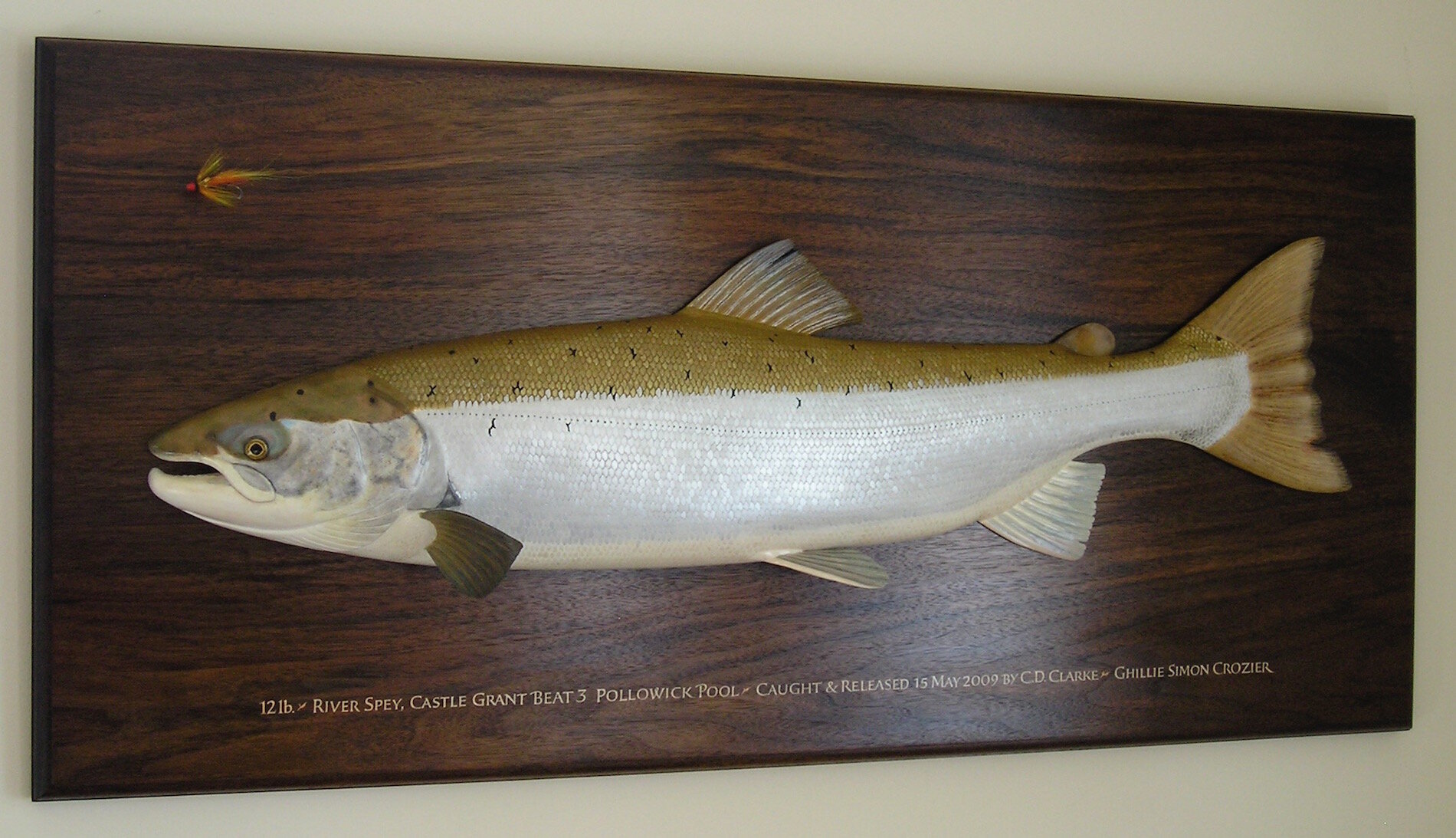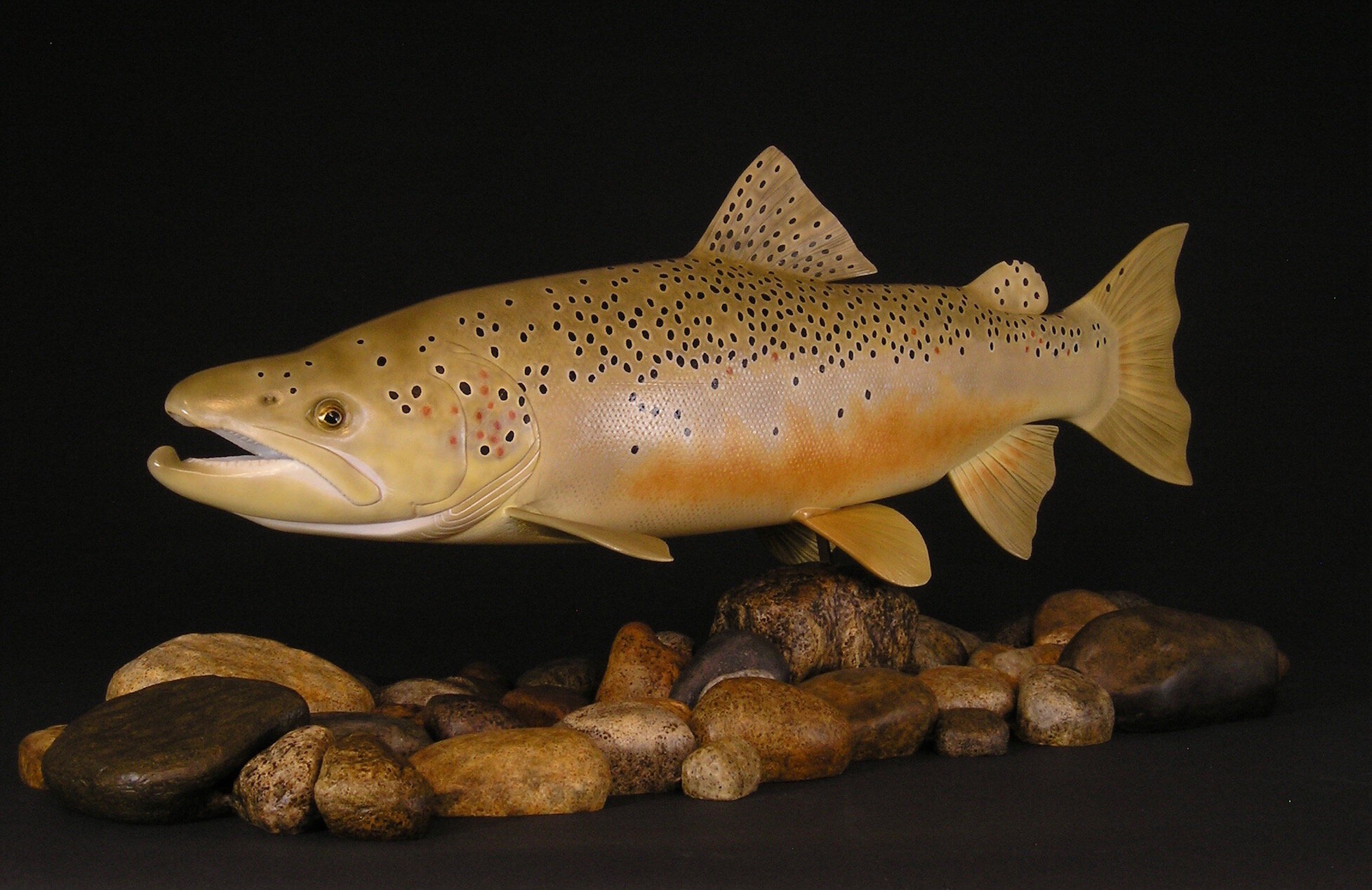Decorative Fish Models & Trophy Carvings
A Brief Historical Perspective
DECORATIVE FISH MODELS
The evolution of contemporary American decorative fish models could be viewed as a progression of influences that loosely includes the oldest known fish carving genre - Indigenous North American fish decoys created to attract and spear fish through holes cut in ice (predating 1,000 A.D.). Nineteenth and early twentieth century European-Americans adopted the indigenous fishing culture as sport and created their own highly stylized fish decoys. Like hunting decoys, the art of fish decoys eventually surpassed their modest utilitarian requirements, however stylized form predominated anatomical accuracy.
Of significantly greater influence and import, mid-to-late twentieth century taxidermists adopting fish carving as an alternative to mounted trophies, spun off decorative fish models as a creative outlet and separate product for non-trophy customers. Their carvings raised anatomical accuracy from the primitive shapes of stylized decoys to realistic fish models.
And as an off-shoot of decoy and taxidermy competitions, the growth and progression of fish carving competitions in the last four decades has significantly contributed to contemporary fish model display and anatomical standards. Influenced by taxidermy, competitive carving and early visionaries, much of the contemporary decorative fish model genre could be described as nature inspired realism, incorporating creative and often elaborately carved interpretive habitat displays.
10” Basswood Eastern Brook Trout Decorative Model, with basswood driftwood, freestone stream bed and brass sugar maple leaf. Modeled on a Kennebec River specimen Caught, Photographed and Released.
TROPHY CARVINGS
To commemorate memorable angling experiences, a few late nineteenth century Scottish and British artists (notably, Scots John Russell, his daughter Dhuie, son-in-law John Tully, and P.D. Malloch), pioneered the trophy carving genre as a highly rendered and permanent alternative to taxidermy. What could be described as the English or U.K. style trophy carving, a half to two-thirds body displayed on a wood panel with hand lettered legend, has set the trophy carving standard for over 100 years and is experiencing a renaissance among a few contemporary North American and European fish carvers. While historically the English style artists relied more on painting technique (trompe l'oeil - color) than carving detail (shape, texture) to create anatomical realism, the style’s constraints still provides diverse interpretation.
32” Atlantic Salmon English Style basswood Trophy Carving on black walnut panel with hand lettered legend. Modeled on the fish caught and released on the River Spey, Scotland. Legend by master lettering artist John Stevens.
Alternatively, American style trophy carving is more recent. While there were pioneers from the early twentieth century (notably Herbert L. Welch, Rangely Maine, 1879-1960), American style trophy carving came to fore in the late twentieth century accompanying decorative fish models and is generally attributed to a few mid-to-late twentieth century taxidermists transitioning to fish carving from specimen mounts. The American style has two forms that display fish in full body - a “free form style” pioneered by Bob Berry that is comparable to decorative fish models displayed on horizontal surfaces, and traditionally styled wall mounted taxidermy where the fish may be partially finished on the body’s back side including the use of one pectoral fin and eye. The two forms offer seemingly limitless display possibilities.
Apart from being a way to commemorate memorable angling experiences and a collectable art form, trophy carving’s most obvious benefit is conservation - they help promote catch and release angling, and mitigate removing the largest and most spectacular “trophy” fish and their genetics from native wild fisheries. It is particularly relevant when one considers that leading conservation advocacy groups currently estimate 60% of the worlds fisheries and 80% of the world’s large fish are unsustainably over-fished.
30” Brown Trout American Style basswood Trophy Carving on basswood free stone stream bed. Modeled on the fish caught and released on Lago Magdalena Patagonia Chile.


